By Alex Trukan
When playing against opposition who restrict space in the central areas well, it might be hard for central midfielders (6 & 8) to get on the ball without pressure and play forwards. One of the ways to overload these areas and build up play might be to have players in more advanced positions dropping deeper to receive. Number 9 and 10 can offer those type of movements and help to fill in the gaps left by 6 and 8. This will also create more space for wingers to come infield, full backs push up higher as well as central midfielders to make forward runs into spaces left behind by 9 and 10. This can be especially useful when playing against opposition who leave space between the lines. Half spaces might serve as a great opportunity to get the ball and transfer it forwards.
As the ball is switched between the centre backs, spaces will often arise on the opposite side. Number 10’s starting position is higher up the pitch, around the halfway line and as the ball is played to the other centre back, he might choose to drop deeper into space to receive. The movement towards the ball should be curved and executed with disguise. Body position of the receiving player should be sideways on and allow him to play forwards.
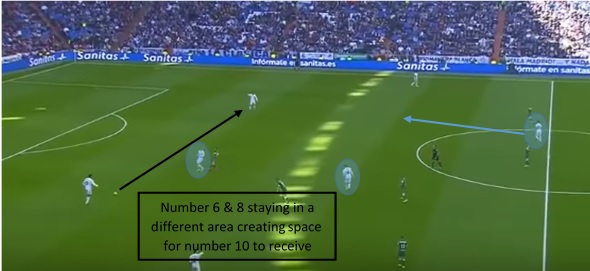
Playing forwards will be more effective if the receiver drops into half spaces between the opposition units. His position should be just behind the line of the opposition players. This will ensure that the pass breaks the unit and the opposition will have to turn to recover behind the ball. As number 10 makes this kind of movement, number 9 should look to stretch the pitch and attempt to make a run in behind the opposition back line. This will not only create a threat in behind but also allow more space for number 10 to turn and create play.
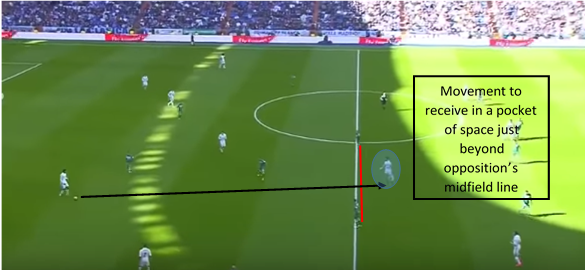
Effective cooperation between 9 and 10 is crucial to ensure the spaces are used effectively and options are created to play forwards. Players at number 9 and 10 should look not only to work on the opposites horizontally (one drops, one goes in behind), but also vertically (playing on different lines). This will cause more problems for defenders and make it easier to combine play between 9 and 10.
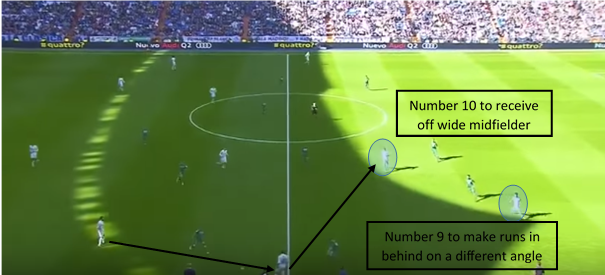
Movements towards the ball by 9 and 10 are also aimed at creating spaces for other players. This is allowed to happen as the opposition players’ reaction will often create new spaces to exploit. For example, as number 10 moves towards the ball, opposition central midfielder will often follow what will narrow up the opposition midfield line. This might create gaps for full back to make a forward run into.
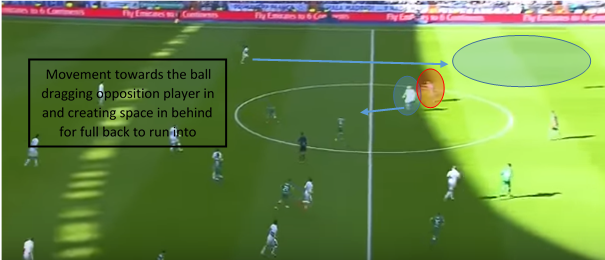
Another example is when spaces left by dropping number 10 are filled in by wingers coming infield. This will often help full backs get higher up the pitch. In this situation number 10 would make a movement into space between centre back and full back and try to distribute the ball into wide areas.
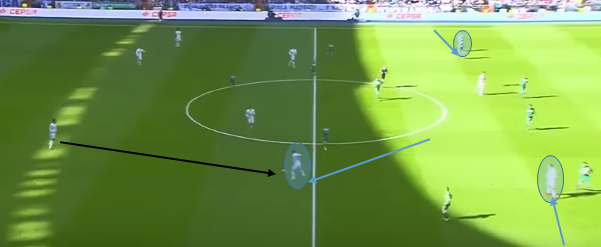
Finally, movement towards the ball by number 10 will create more space for number 9 to receive and secure the ball. Number 10 dropping deeper might drag the opposition midfield unit higher what will often create gaps between the units. As soon as the pass is played, number 10 will need to support number 9 by making a run in behind or providing an option in front of the ball to combine.
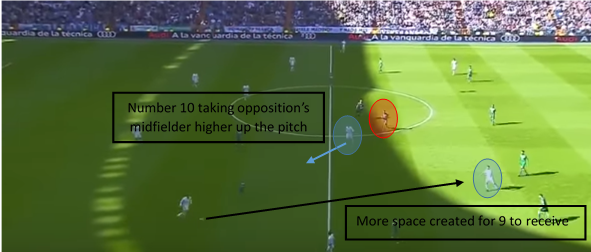
This is why, it is important to make sure those type of movements by number 10 are not only exploited by getting him on the ball but also by other players moving into newly created spaces and taking advantage of those areas.
By Alex Trukan, Development Coach, Nottingham Forest
@AlexTrukan


